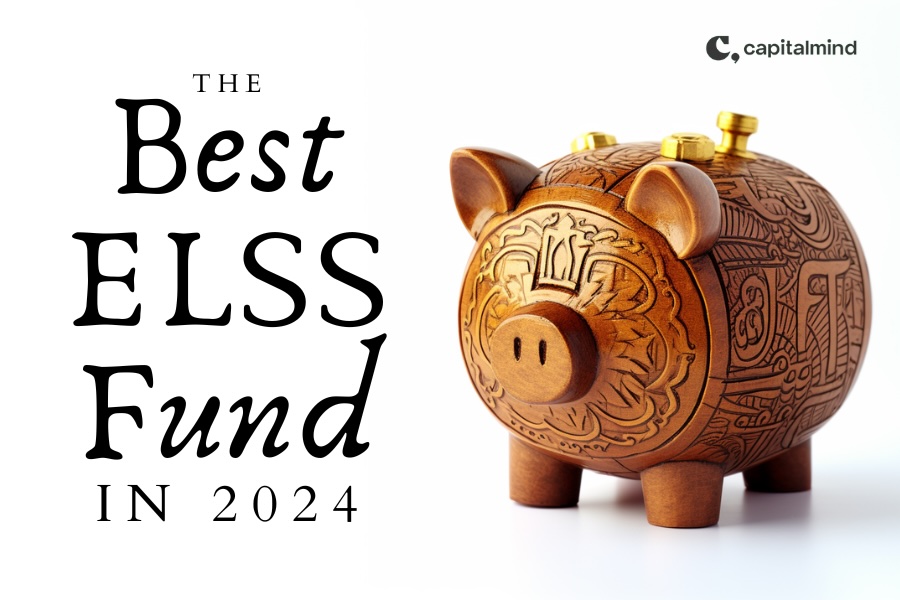Nippon India has launched an NFO (New Fund Offering) for a Multi Asset Mutual Fund. The NFO is open from 7th to 21st August 2020. We took a look to see if it makes sense for investors.
Short Answer: We don’t recommend investing in this one. Its allocation to non-equity assets is marginal, and its security selection framework for every asset class is discretionary meaning a lot of their decisions have to go right for this fund to deliver. We believe another recently launched Multi Asset fund is a better alternative to the Nippon India Multi Asset Fund.
(For full access to Capitalmind research, model portfolios, and our subscriber forum, Upgrade to Capitalmind Premium. Use CMPOFF10 and get 10% off annual subscription price.)
Read on for our take on how to think about Multi-Asset funds and this new fund in particular.
What is the Nippon India Multi Asset Fund?
From the Product Note
The primary objective of Nippon India Multi Asset Fund is to seek long term capital growth by investing in equity and equity-related securities, debt & money market instruments and Exchange Traded Commodity derivatives and Gold ETF as permitted by SEBI from time to time
The underlying premise is that since different asset classes (equity, debt, gold, others) tend to outperform at different times, a basket of mostly uncorrelated assets offers better risk-adjusted returns over the long-term.
Allocate, First Allocate
We have been banging on the asset allocation drum for a while now. We believe it serves two purposes:
- Better for mental health: We (human beings) are not wired to handle sharp drawdowns. Even if we know in our brains that in spite of the volatility, equities will deliver superior returns over the long term, the sight of a portfolio deep in the red will make people do funny things. Like sell everything and move to cash to get the discomfort over with and swear off equities. Our analysis shows even a combination of NIFTY with FDs would have offered similar return for far lesser volatility.
“In uncertain times like today, the awareness that no matter how deep the correction, a part of your investments will remain unscathed and will keep growing, can make the difference between losing the plot and making the right decisions.” [Forget stocks for a bit, get your Asset Allocation right]
- Better for long-term returns: Contrary to giving up returns for safety, a properly diversified basket of assets can help outperform any single asset with much lower volatility. We tested this by combining Debt, Gold, International Equities with a Domestic Equity portfolio to see the impact on results.
“An investor’s objective should be to allocate the minimum possible to risky assets while meeting his (her) required annual return over the long-term.” [How to think about Asset Allocation in India: Part 1 & Part 2]
How have Multi Asset Funds performed?
Table shows historic performance of Multi-Asset Funds in India.
 Usually, when you compare funds of a category, you see results clustering tightly around a central mean, with a couple of outliers, on the positive and negative ends of the scale. But with Multi-Asset funds you see significant dispersion in performance across all time-frames, and even in any given year.
Usually, when you compare funds of a category, you see results clustering tightly around a central mean, with a couple of outliers, on the positive and negative ends of the scale. But with Multi-Asset funds you see significant dispersion in performance across all time-frames, and even in any given year.
If you were not told that they were all funds in the same category, there would be no reason to believe they had any overlap in their investment strategy.
The reason is most Multi-Asset Funds are really “Equity-and-a-bit” Funds. Table below shows the stated asset allocation strategy of some of the large multi asset funds and their top holdings last time we checked.
 Every fund has an upper limit of 80% for equities. The top three funds in the table have much smaller allocation to non-equity asset classes, ranging between 10 and 30%. This makes them not really “Multi-Asset Funds” but more “Equity-and-a-bit Funds”.
Every fund has an upper limit of 80% for equities. The top three funds in the table have much smaller allocation to non-equity asset classes, ranging between 10 and 30%. This makes them not really “Multi-Asset Funds” but more “Equity-and-a-bit Funds”.
The 4th fund, SBI Multi Asset Fund has given itself the maximum flexibility in how it has framed its target allocation. We think this is good and bad.
Good because it means it has been able to be 35% allocated to GSecs, which is significant allocation to Debt, unlike what the other funds can do.
Bad because it all comes down to the fund manager’s judgement and timing. And as brilliant as they maybe, they are human after all. In times when equities roar, it’s only natural to let equity allocation drift to the maximum allowable because otherwise you risk underperforming other funds in the category, many of which can not go below 65% in any case.
Nippon India Multi Asset Fund: What we like
Adds International Equities to the Basket
A multi-asset strategy is only as effective as the assets in the basket. Most Multi Asset Funds in India consider only Indian equities.
We have been strong believers in the need for international diversification in the Indian investors’ portfolio. Nippon India Multi Asset Fund will have meaningful allocation ~20% to companies outside India.
Of this 65% will be in the US, 20% in Japan & Europe, and 15% in others. So far so good.
Nippon India Multi Asset Fund: What we don’t like
Still feels like “Equity-and-a-bit”
While the lower bound of 50% for domestic + international equities is meaningfully lower than for many existing Multi Asset Funds, the non-equity components have marginal target allocations. Given the exact mix at any time is discretionary, having more freedom to increase debt and commodities allocation would have been encouraging.
Too much dependence on discretionary decisions
Multi Asset Funds are meant to rely on the discipline of maintaining uncorrelated assets in the mix to deliver superior risk-adjusted returns. They are better off holding the lowest cost basket of securities within each asset class to reduce the impact of discretionary decisions.
Instead, in this fund, we have discretionary decisions at two levels:
- Asset-level allocation itself
- What securities in each asset class
The domestic equity selection framework says it will use a bottom-up approach to find stocks with a gap between fair value and market price.
The International equity selection will pick 25 stocks, 15 in the US, 5 in Europe, and 5 from the rest of the world.
The Commodities selection framework says “flexibility to invest in various commodities to provide diversification within commodities”. It follows it up by saying “Investment will be predominantly into Gold”.
And lastly, the Fixed Income component will try to pick a moderate duration profile with a focus on stable returns with moderate volatility.
For this fund to deliver on its of superior risk-adjusted returns, the fund managers need to get a lot of decisions right.
Bottomline
It’s great to see Multi Asset Funds starting to add meaningful international diversification, which makes for a more robust asset basket.
But the low allocation to non-equity and the entirely discretionary nature of pretty much every decision to be made means the fund managers have to get everything right for this fund to deliver. In our opinion, a better approach would have been to just buy a low-cost basket representing the entire market within each asset class, and manage the allocation as the key driver of performance.
We do not recommend investing in this fund.
The Motilal Oswal Multi Asset Fund is a better alternative. It offers international diversification through the S&P500 ETF, into Gold with Gold ETFs, and has flexibility to go almost entirely into debt. Though this fund too has its niggles, we think it is a better way to get exposure to multiple assets in your portfolio.
For full access to Capitalmind research, model portfolios, and our subscriber forum, Upgrade to Capitalmind Premium. Use CMPOFF10 and get 10% off annual subscription price.






